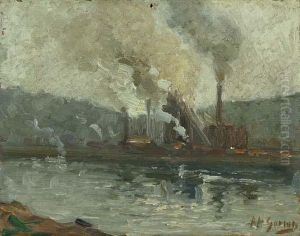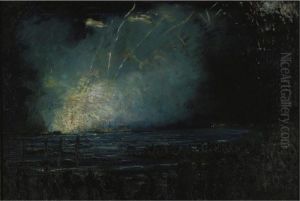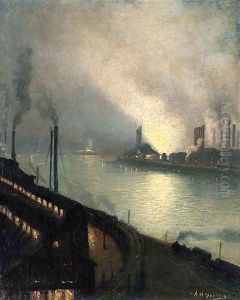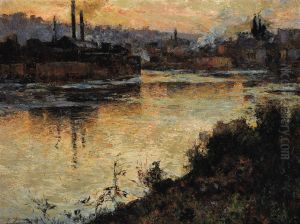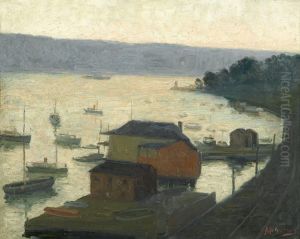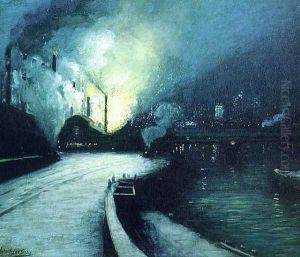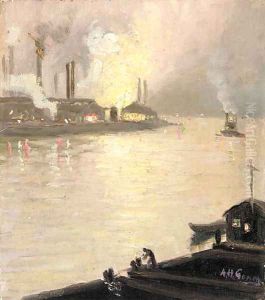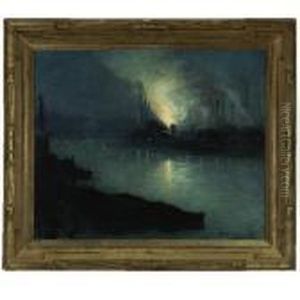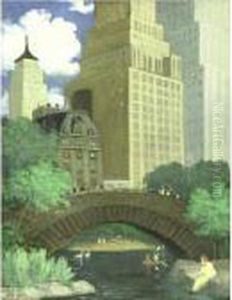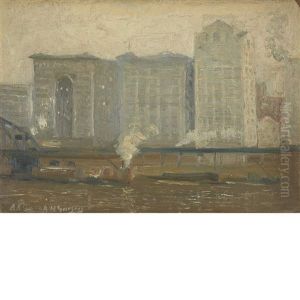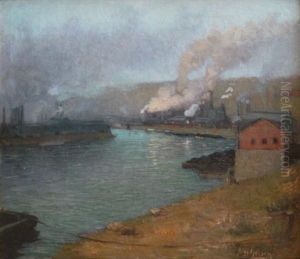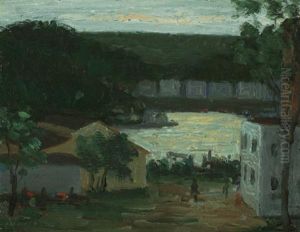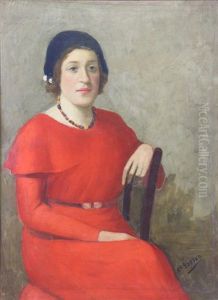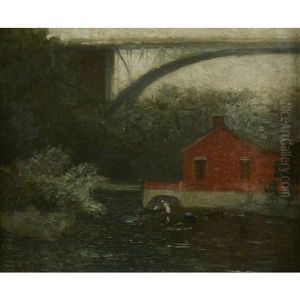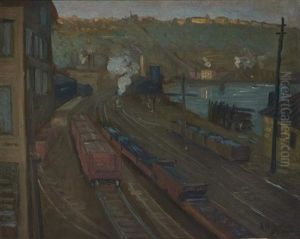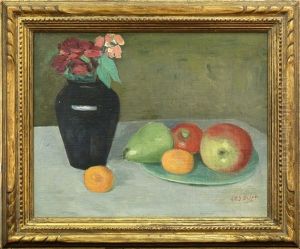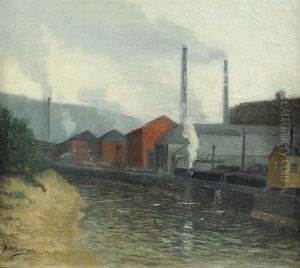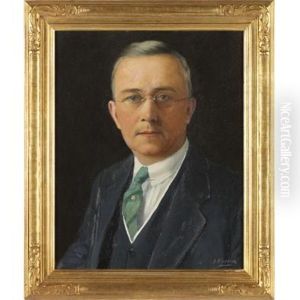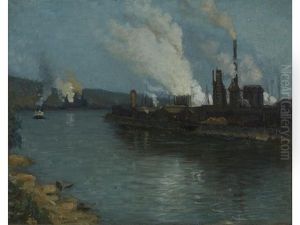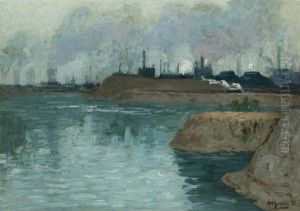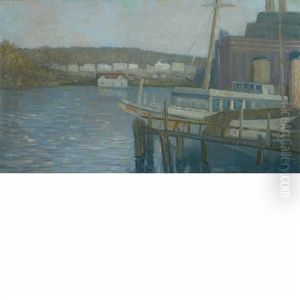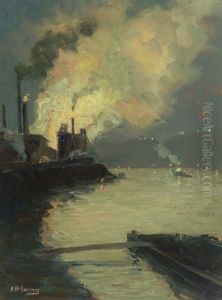Aaron Harry Gorson Paintings
Aaron Harry Gorson was a renowned American painter best known for his depictions of industrial scenes in Pittsburgh. Born on December 19, 1872, in Lithuania, then part of the Russian Empire, Gorson immigrated to the United States in the late 19th century. He settled in Pittsburgh, Pennsylvania, which at the time was a burgeoning center of industry and manufacturing.
Gorson studied at the Pennsylvania Academy of the Fine Arts in Philadelphia and later in Paris at the Académie Julian, a popular institution among American and international artists. After completing his education, he returned to Pittsburgh and was captivated by the city's industrial landscape. His work began to focus on the steel mills and factories that dominated the region's economy and the lives of its inhabitants.
Throughout his career, Gorson developed a distinctive style that combined elements of realism and impressionism. His paintings often depicted smoke-filled skies and the glowing furnaces of steel mills, capturing both the gritty reality of industrial labor and the unexpected beauty found in its midst. He had a particular talent for portraying the play of light and shadow at different times of the day, which added a dynamic and atmospheric quality to his work.
Gorson's paintings gained recognition for their artistic merit and as historical records of an era when the steel industry was a critical part of America's growth and identity. Despite the focus on industrial subjects, his work is imbued with a sense of tranquility and the resilience of the human spirit in the face of the relentless march of progress.
Throughout his life, Gorson was an active member of the arts community and exhibited his work at various institutions, including the Carnegie Institute, the Art Institute of Chicago, and the Pennsylvania Academy of the Fine Arts. His art can be found in the collections of several museums, including the Carnegie Museum of Art in Pittsburgh and the Westmoreland Museum of American Art.
Aaron Harry Gorson continued to paint until his death on October 24, 1933, in New York City. His legacy lives on through his contributions to American art, particularly his unique perspective on the industrial age and its impact on the American landscape and its people.



